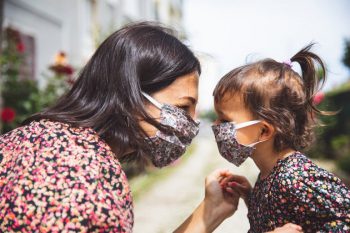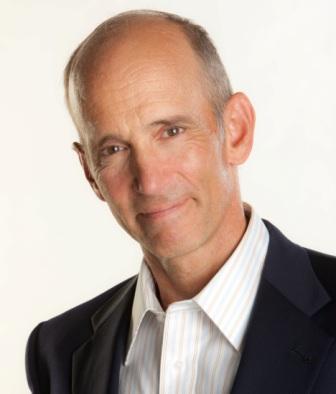Contributing writer for Wake Up World
Poor air quality and the use of face masks have been a daily fact of life for many living in China. Since the 1950s, some in Japan, China and Taiwan have worn masks as a means of protecting themselves against air pollution. They also wear them for other reasons, specific to culture.1
In Japan, people wear masks when they feel sick and women wear them when they go out without makeup. Bradley Sutton is an American who lived in Japan. He told a reporter from VOA News that wearing a mask in Asia is ingrained in their culture, so doing it for reasons other than air pollution is easier.2
Despite the problem with air quality before the first SARS outbreak in China in 2002, masks were not a regular part of every Asian’s life. It was only after SARS that they were used consistently. Manufacturers in East Asia are now producing up to 20 million masks each month. Before SARS, people living in Taiwan believed masks marked them as being severely ill.
Since then, the Taiwanese have embraced the use of a mask. In a commentary in China Under the Radar, the writer believes young Chinese are wearing them to build a “social firewall” and avoid being approached by others, “just as sunglasses or headphones would.”3 While real-world testing indicates that masks used for air pollution vary widely in their effectiveness, they have become a staple in Asian life.4
After the World Health Organization declared SARS-CoV-2 a global pandemic, masks have become more commonplace around the world. Since science and testing has not yet caught up, many are choosing to wear a mask in public to allay others’ fears. Whether or not they are effective, it’s important to recognize the communication problems they introduce and to know how to address those problems.
Decoding Facial Actions Helps Categorize Emotion
Masks have removed a crucial way in which people use visual cues to communicate and understand each other. Smiles, cheek twitches and lip movements are all lost under a mask. These visual perceptions of expression are part of how people recognize and understand communication.
In a paper published in Current Opinions in Psychology, one professor from The Ohio State University hypothesized that to interpret emotion, the visual system, including the eyes and brain, attempts to identify muscle activation in the face.5
Based on computational, behavioral and imaging evidence, he believes humans are able to effortlessly infer an emotional state by reading facial expressions. This is different from the categorical model that proposes there are six distinct and universal emotions that are communicated across cultures. These are happiness, anger, disgust, sadness, surprise and fear.6
The second theory is related to a dimensional model that suggests there are varying dimensions across emotions that are not distinct. Researchers have found evidence that supports the use of more than one way to categorize expression. While this may be highly interesting to psychological researchers, what does it mean in terms of our ability to communicate, when we can’t see most facial expressions?
When adults were tested, they did not have to acknowledge they had seen a face for their brain to recognize the expression.7 While this is a good indication of how quickly the visual system communicates with the brain, when facial expressions are not fully visible, this recognition is hampered.
Rebecca Brewer from the Royal Holloway University of London points out that humans process a person’s whole face rather than paying attention to a singular feature, such as the eyes, nose or mouth. “When we cannot see the whole face, such holistic processing is disrupted,” she says.8
Brewer adds that this happens even in countries where the women wear veils in public. Children and adults learn to interpret information from the whole face; expressions on others’ faces, even furrowed brows, are used in several cognitive processes.9
Your Face Is an Effective Communication Tool
Aleix Martinez is the researcher from The Ohio State University. He has been studying the recognition of facial expressions while programming machine learning algorithms.
He believes that relying on facial expressions can also be misleading and explains that the key to interpretation is the study of the entire body posture, motion and context.10 Yet, your face communicates more than what’s coming out of your mouth. The authors of one paper described it this way:11
“One of the richest and most powerful tools in social communication is the face, from which observers can quickly and easily make a number of inferences — about identity, gender, sex, age, race, ethnicity, sexual orientation, physical health, attractiveness, emotional state, personality traits, pain or physical pleasure, deception, and even social status.”
In countries where facial coverings are new, many are struggling with the ability to communicate and find it hard to breathe. While this may be difficult for lots of people, it can be overwhelming for those with communication difficulties or psychological trauma. For example, people who are deaf can no longer read lips, which severely hinders communications with a person who doesn’t know sign language.12
Masks Can Trigger a PTSD Episode
Yet another concern with widespread mask-wearing is related to people who have post-traumatic stress disorder (PTSD) and those who may be traumatized from the pandemic. Yuval Neria of the New York State Psychiatric Institute runs the institute’s PTSD program and told the American Heart Association that mental health professionals are in uncharted territory in predicting the effects of this pandemic:13
“I don’t think the mental health consequences will be limited to PTSD only. In fact, I think we should expect other mental health problems, such as depression, anxiety, substance abuse and potentially increase in suicide. They are already there and kind of showing themselves.
Disasters are usually limited to space and time. And there is an onset of a disaster – which may take some time – but there is an end. But I think viruses have their own way to inflict adversities on us. The threat is ambiguous. (It) is everywhere and nowhere. It’s ongoing. It may take a long time.”
There is concern that the pandemic is also affecting those who have a history of trauma. PTSD is not limited to people who served in the armed services. Men and women who are victims of domestic abuse or sexual assault may have significant difficulty wearing masks.
In 2018, the number of self-reported rapes or sexual assaults of people older than 12 doubled from 2017.14 In 2015, 1 in 5 U.S. women reported having experienced a completed or attempted rape at some time in their life. Physical violence from an intimate partner has affected 33% of women and 25% of men, and 14.3% of women have been injured.15
When these experiences involve choking, smothering or the attacker wearing a mask, it can be even worse. Psychiatric nurse practitioner Adam Barkeloo spoke with Channel 9 News, expressing concern about how this can trigger a PTSD episode:16
“The one we worry about the most is trauma. Sexual trauma, an attack. What might not seem like a big deal to you or I might be a really big deal to a kid or an older person or a female.”
Dawn Nau told her story to a reporter from the Altoona Mirror. She had been a bank teller during a robbery during which a man wearing a bandana pointed a gun in her face. The reporter wrote:17
“Last week, Dawn Nau of Williamsport went to the grocery store for the first time since wearing a mask became mandatory in her state. For someone with post-traumatic stress disorder and anxiety, this was a huge task.
‘To be honest, I thought I was being brave,’ she said. ‘The first time I came up an aisle, there was a man there with a mask on.’ Dawn had to tell herself to breathe. She went into the next aisle and took her mask off.
‘I was in the store maybe five minutes before I had to take my mask off,’ she said. ‘It feels like I’m suffocating, like I can’t breathe. It panics me.’ She wasn’t in the store long, but by the time she left, she was soaked from sweat.”
Dawn’s story is not unique. It is similar to that of Lori Perkins18 and thousands of others who live with anxiety related to PTSD that was caused by traumatic events in their lives.
Still Face Experiment Demonstrates Early Facial Recognition
Children are also experiencing distress from adults wearing masks. This short video demonstrates the role that facial expression plays in infant interaction. It’s called the “Still Face” experiment, which was first performed in 1975 by Edward Tronick, Ph.D., who continues to conduct research on how a mother’s stressful behavior may affect the emotional development of infants and children.19
The study may be one of the most often-cited in developmental psychology. Further investigations into infants’ abilities to differentiate emotional expressions have revealed that within the first six months, babies learn to recognize emotion and distinguish physical characteristics associated with those emotions.20
In one study, scientists found that babies spend more time looking at the mouth of an angry face just after hearing a happy voice. The researchers believe this is a reaction to hearing something different from what they’re seeing and that it may demonstrate the ability at an early age to understand emotional information based on what is heard and seen.21
Educators have long known that many young children have difficulty when masks are worn. At some elementary schools masks aren’t allowed during Halloween, as the children become stressed. Kang Lee, Ph.D., from the University of Toronto, says that children don’t have full facial recognition abilities until they’re about 14 years old.22,23
Until that time, children see individual features rather than the entire face. When adults and children use masks, it becomes more difficult for children to recognize individuals and understand emotional signals. This is especially difficult for children on the autism spectrum who often have trouble understanding and reading nonverbal cues.
Young children also look to their parents and caregivers to interpret new situations. This reliance on facial expressions and even tone of voice is distorted by a mask, and may make it challenging for them to regulate their response. Psychologists call this “social referencing” and it develops in children through the early preschool years.24
How Can You Adjust to Public Communication?
Interpreting nonverbal cues and communicating while wearing a mask in public can be challenging. However, there are several strategies you can use to help yourself and your children. Consider these tips from Brookings:25
•Introductions — Before going into a public place, show your children a face mask. Allow them to handle it and play with it. Explain that you’ll be wearing a mask in public and others will be wearing them too. Put it on your face in front of your child. Children may have less anxiety when they can anticipate events.
•Games — Play “peek-a-boo” by covering and uncovering your mouth with your hand and mask. Tell them you’ll be smiling under the mask, even if they can’t see it. Use “guess-my-expression” to help them look for clues for expressions. Wearing a mask, ask them to watch your eyes and eyebrows and guess what expression you’re making. Take off the mask to let them see if they got it right.
•Talking — Talk with your child through the mask at home. Adjust your tone and pitch so they can hear you.
Many adults are having difficulty wearing a mask in public. While simple strategies may not be useful to completely allay anxiety, there are some things you can do to improve the situation:26,27,28
•Nonverbal cues — Since facial expressions are much more difficult to read, using other cues, such as a hand wave, laughing when you smile and showing more of your emotions can help others understand what you’re saying. Making eye contact and being more expressive than normal can also help.
•Voice volume — The mask will muffle your voice somewhat, so be sure you are speaking loud enough for the other person to hear you. They may stop asking you to repeat yourself after several times and just give up.
•Relaxation techniques — Since your nervous system doesn’t often listen to reason, it’s helpful to have a few techniques you can use in public if you feel anxious while wearing a mask.
Breathing deeply, listening to music or adding a few drops of lavender to the front of your mask may help. You can activate the vagus nerve, which helps calm the nervous system, by using your facial muscles to chew gum, sing or hum.
Sources and References:
Originally published at mercola.com and reproduced here with permission.
Recommended articles by Dr. Joseph Mercola:
About the author:
Born and raised in the inner city of Chicago, IL, Dr. Joseph Mercola is an osteopathic physician trained in both traditional and natural medicine. Board-certified in family medicine, Dr. Mercola served as the chairman of the family medicine department at St. Alexius Medical Center for five years, and in 2012 was granted fellowship status by the American College of Nutrition (ACN).
While in practice in the late 80s, Dr. Mercola realized the drugs he was prescribing to chronically ill patients were not working. By the early 90s, he began exploring the world of natural medicine, and soon changed the way he practiced medicine.
In 1997 Dr. Mercola founded Mercola.com, which is now routinely among the top 10 health sites on the internet. His passion is to transform the traditional medical paradigm in the United States. “The existing medical establishment is responsible for killing and permanently injuring millions of Americans… You want practical health solutions without the hype, and that’s what I offer.”
Visit Mercola.com for more information, or read Dr. Mercola’s full bio and resumé here.
Related posts:
Views: 0
 RSS Feed
RSS Feed

















 August 27th, 2020
August 27th, 2020  Awake Goy
Awake Goy 



 Posted in
Posted in  Tags:
Tags: 
















